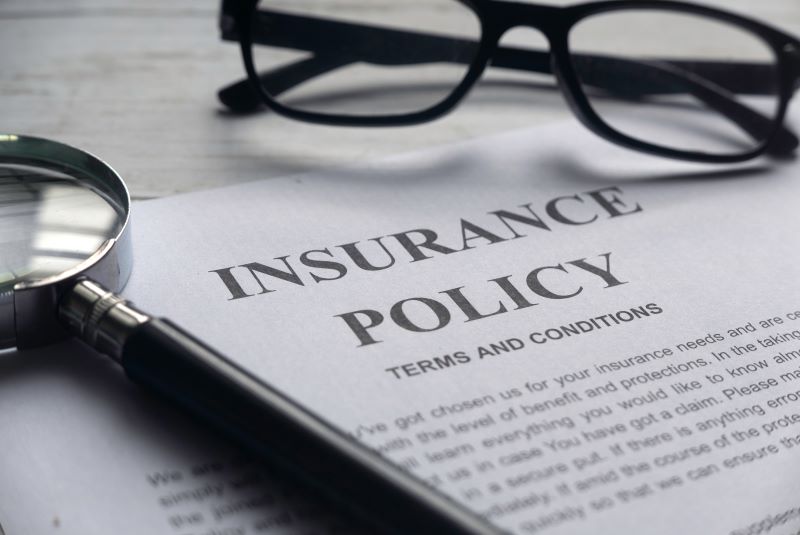Understanding insurance can be a complex and daunting task, but it is an essential aspect of protecting yourself and your assets. In this article, we will delve into the world of insurance policies, premiums, Grubbs Group and more. By exploring the different types of insurance policies available, as well as understanding the key components that make up these policies, you will gain a comprehensive understanding of how insurance works.
To begin our journey into the realm of insurance, we will examine the various types of insurance policies that exist. From auto to health to homeowners’ insurance, each policy serves a unique purpose in safeguarding against potential risks. By understanding the differences between these policies, you can determine which ones are necessary for your specific needs.
Once we have established an understanding of the different types of insurance policies, we will turn our attention to the key components that make up these policies. These components include coverage limits, deductibles, and exclusions – all vital elements that dictate what is covered by your policy and what is not. By familiarizing yourself with these components, you can ensure that you have adequate protection in place.
In addition to exploring insurance policies and their components, we will also delve into factors affecting insurance premiums. Understanding why premiums vary from person to person can help you make informed decisions when choosing an insurer or adjusting your coverage. By gaining insight into how insurers calculate premiums based on factors such as age, location, and claims history among others; you will be better equipped to navigate the world of insurance with confidence.
In conclusion,
Understanding Insurance: Policies, Premiums and More provides readers with a comprehensive overview of everything they need to know about navigating through the often-confusing world of insurances. From learning about different policy types to understanding key policy components and factors affecting premiums; this article aims to equip readers with knowledge that empowers them while making important decisions about their personal or business coverage requirements.
Different Types of Insurance Policies

There’s a wide range of insurance policies available, each catering to specific needs and providing different levels of coverage. Understanding the importance of insurance coverage is crucial in order to protect yourself and your assets against unexpected events.
One common misconception about insurance is that it’s unnecessary or only for the wealthy. However, anyone can benefit from having insurance as it provides financial security in case of unforeseen circumstances.
Auto insurance is one type of policy that many people are familiar with. It offers protection for your vehicle and covers damages caused by accidents, theft, or vandalism.
Another common type is health insurance, which helps cover medical expenses such as doctor visits, hospital stays, and prescription medications.
Homeowners’ insurance is essential for homeowners as it protects their property against damage or loss due to events like fire, storms, or burglary.
It’s important to note that not all policies are created equal. Some provide basic coverage at lower premiums while others offer comprehensive protection but at a higher cost.
When choosing an insurance policy, it’s essential to carefully consider your specific needs and budget so that you can find the right level of coverage for you. By understanding the importance of having adequate insurance coverage and dispelling misconceptions about its necessity, you can make informed decisions when selecting policies that will provide the financial protection you need in various aspects of life.
Key Components of Insurance Policies
Explore the essential elements of an insurance policy, so you can fully grasp its intricacies and make informed decisions that protect your assets and mitigate risks.
One key component of an insurance policy is the claim process. Understanding how to file a claim and what steps to take in the event of a loss or damage is crucial for receiving compensation from your insurer. It’s important to review your policy carefully, as it will outline the specific procedures and documentation required when filing a claim. This may include providing proof of loss, such as photographs or receipts, and completing any necessary forms. By familiarizing yourself with the claim process, you can ensure a smoother experience in case of an unfortunate event.
Another important element of an insurance policy is coverage limits. These limits refer to the maximum amount that an insurer will pay out for a covered loss or event. It’s crucial to understand these limits as they can impact your financial protection in case of a claim. Your policy will specify different coverage limits for different types of losses or events, such as property damage or liability claims. It’s important to evaluate whether these limits are adequate based on your specific needs and circumstances. If you require higher coverage limits than what’s offered by standard policies, you may need to consider purchasing additional coverage through endorsements or separate policies. Being aware of your coverage limits allows you to make informed decisions about protecting your assets and ensuring sufficient financial protection in case of unforeseen events.
Understanding the key components of an insurance policy, including the claim process and coverage limits, is essential for making informed decisions that protect your assets and mitigate risks effectively. Familiarizing yourself with the claim process enables you to navigate potential losses more smoothly while maximizing compensation from your insurer. Additionally, being aware of coverage limits ensures that you have adequate financial protection in place for various types of losses or events. By taking time to thoroughly review your insurance policy and asking questions if needed, you can gain confidence in your coverage and make well-informed choices to safeguard your assets.
Factors Affecting Insurance Premiums
Factors such as your age, driving history, and the type of coverage you choose can impact how much you pay for insurance. When it comes to car insurance, your driving record plays a significant role in determining your premiums. If you have a clean driving record with no accidents or traffic violations, insurance companies will view you as a low-risk driver and offer you lower premiums.
On the other hand, if you have a history of accidents or speeding tickets, insurers may consider you a high-risk driver and charge higher premiums to compensate for that risk. Therefore, maintaining a good driving record is crucial if you want to secure affordable car insurance.
Another factor that affects insurance premiums is age and health when it comes to life insurance. Younger individuals generally pay lower premiums because they are considered less likely to pass away during the policy term. As people age, their risk of developing health issues increases, which translates into higher premiums since there is an increased likelihood of filing claims.
Additionally, factors such as smoking habits and pre-existing medical conditions can also influence life insurance premiums. Insurers typically evaluate these factors through medical exams or questionnaires to assess the level of risk involved in insuring an individual’s life.
To summarize:
1. Impact of driving record on car insurance premiums: Having a clean driving record can result in lower car insurance premiums while a history of accidents or traffic violations can lead to higher costs.
2. Influence of age on life insurance premiums: Younger individuals generally pay lower life insurance premiums due to their lower likelihood of passing away during the policy term.
3. Influence of health on life insurance premiums: Poor health or pre-existing medical conditions can increase life insurance costs as there is an increased chance of making claims.
4. Additional factors affecting life insurance premiums: Smoking habits and other lifestyle choices may also impact life insurance costs as they contribute to overall health risks assessed by insurers.
Understanding these factors will help you make informed decisions when choosing insurance coverage and take steps to potentially lower your premiums.
Conclusion
In conclusion, understanding insurance policies, premiums, and other key components is crucial in order to make informed decisions about your coverage.
There are various types of insurance policies available, each designed to protect against specific risks or losses. Whether it’s health insurance to cover medical expenses, auto insurance to protect against accidents, or homeowners insurance to safeguard your property, it’s important to choose the right policy based on your individual needs.
When it comes to insurance policies, there are several key components that you need to be aware of. These include the coverage limits, deductibles, and exclusions. Coverage limits refer to the maximum amount that an insurer will pay for a covered loss. Deductibles are the out-of-pocket expenses that you must pay before your insurance kicks in. Exclusions are conditions or circumstances that are not covered by the policy.
The cost of insurance premiums is influenced by a variety of factors such as age, gender, location, driving record (in the case of auto insurance), and health history (for health insurance). Additionally, the type and amount of coverage you choose will also impact your premium. It’s important to shop around and compare quotes from different insurers in order to find the best coverage at a competitive price.
To summarize, understanding insurance policies and premiums requires a thorough knowledge of the different types of policies available as well as their key components. By considering factors like coverage limits and deductibles while also comparing quotes from multiple insurers, you can make an informed decision about which policy is right for you. Remember that having adequate insurance coverage provides peace of mind knowing that you’re protected financially in case of unexpected events or losses.


